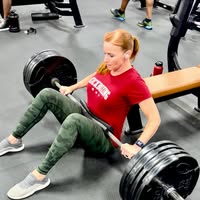
Write something
The Science of Sleep Peptides & Neuroinflammation(Semax, DSIP, Epitalon)
Sleep isn’t passive recovery it’s a cellular recalibration.And if you're not sleeping deeply, your mitochondria, immune system, and brain aren’t clearing debris, regulating inflammation, or consolidating memory efficiently. Enter: Sleep peptides—not sedatives, but neurobiological modulators that repair signaling patterns upstream of symptoms like fatigue, anxiety, poor REM, and sleep fragmentation. Let’s break down the 3 most compelling tools: 1. DSIP (Delta Sleep-Inducing Peptide) - Primary action: Normalizes sleep architecture and promotes deep non-REM sleep - Mechanism: Reduces corticotropin-releasing hormone (CRH), dampens HPA axis hyperactivity, improves hypothalamic GABA tone - Bonus: Acts on mitochondrial protection and glymphatic clearance - When to use: Difficulty staying asleep, nervous system overdrive, parasympathetic insufficiency 2. Semax - Primary action: Neuroprotective and cognitive-enhancing, especially under stress - Mechanism: Boosts BDNF, modulates dopamine/serotonin, reduces neuroinflammation via NRF2 and antioxidant pathways - Bonus: Promotes resilience under oxidative stress - When to use: Brain fog, mood swings, post-infection fatigue, circadian mismatch 3. Epitalon (Epithalamin analog) - Primary action: Normalizes circadian rhythm via pineal gland restoration - Mechanism: Increases melatonin, reduces oxidative damage, supports telomerase activity, improves pineal peptide signaling - Bonus: Supports SIRT1 and FOXO3a longevity genes - When to use: Chronically poor sleep timing, aging-related rhythm disruption, neuroinflammation Big Picture:These aren’t “knock-you-out” tools like sedatives.They restore signaling fidelity—allowing your body to re-enter deep sleep states and modulate inflammatory and redox pathways during sleep. Want to try them? Stacking depends on your redox state, inflammation load, and circadian integrity. Drop a comment and share your favorite sleep stack.
Understanding Redox: The Last Article You Will Ever Need To Read And The Keys To The Kingdom
Redox is one of those concepts that everyone has heard of but very few people truly grasp, and yet almost everything in human physiology depends on it. For trainers and clinicians, redox is the hidden language that tells you why someone can train hard one day and crash the next, why fat loss stalls even with perfect macros, why motivation drops without a psychological trigger, why inflammation rises mysteriously, or why protocols that used to work suddenly stop producing results. Redox isn’t a supplement, a lab marker, or a buzzword. It is the most fundamental process life uses to create energy, repair damage, and adapt to stress. When redox flows, people adapt. When it gets stuck, people stagnate. Understanding redox at a deep level gives you the ability to see beneath symptoms, beneath lab markers, beneath surface-level physiology, and down into the actual physics and molecular dynamics that determine whether a person is moving toward resilience or toward dysfunction. This redox deep dive will walk through what redox is, why it matters, how it gets stuck, what “stuck” actually means at the molecular level, and how different stressors push the system into different dysfunctional patterns. Throughout this, I’ll use analogies and imagery that make the invisible world of electrons and membranes feel intuitive and concrete, allowing you to visualize exactly what is happening inside cells when energy is being made—or when the system jams. You’ll see how mitochondrial membranes behave like electrical waterfalls, how electrons move like crowds of people flowing through hallways, how redox imbalance can freeze a system the way traffic jams choke off a city, and how trainers and clinicians unintentionally worsen stuck redox by focusing on quantity of activity instead of the phase of the system. Redox is short for reduction and oxidation the transfer of electrons. To understand why this matters, imagine every cell in your body as a tiny city. Energy isn’t created in one burst; it’s created by passing electrons down a series of steps, like handing a baton from one runner to the next. Reduction is when a molecule gains electrons, oxidation is when it loses electrons. In biology, electrons fall down an energetic staircase inside mitochondria called the electron transport chain. As electrons move, they power tiny pumps that push protons across a membrane, building what can be imagined as a “pressure gradient” or electrical tension. This tension the mitochondrial membrane potential is like the charged battery that lets ATP synthase spin and generate ATP. Think of it like water flowing through a hydroelectric dam: the higher the water pressure behind the dam, the more electricity you can generate. If the water level drops too low, the turbine stops. If the dam wall gets blocked and pressure rises too high, the system becomes dangerous. Mitochondria work exactly the same way. Redox is the management of electron flow across the mitochondrial inner membrane. Everything hinges on whether electrons are moving, whether they have somewhere to go, whether the membrane potential is balanced, and whether the cell can match energy demand with supply.
The Secret Calibration Trick Your Muscles Forgot (And How MF-300 Brings It Back)
Imagine your muscle system as a handmade Patek Philippe watch. Not a flashy accessory, but a mechanical masterpiece built from hundreds of micro-engineered components, each one tuned to transfer energy, rhythm, and precision. When a watch like this is young and perfectly calibrated, the movement runs smoothly, the second hand glides, the chronograph responds instantly, and every gear communicates with the next with almost zero friction. But as time passes, even the finest watch quietly drifts out of tune. Lubrication thickens. Gears lose polish. The escapement rhythm softens. Nothing breaks, but the internal conversation weakens. The watch still tells time, just not with the effortless elegance it once had. Aging muscle behaves the same way. Inside the cell, one of the signals that keeps everything responsive is PGE2, a messenger molecule that tells mitochondria how to renew themselves, activates stem cells for repair, and helps the neuromuscular system stay sharp. The enzyme that breaks PGE2 down is 15-PGDH. In youth, it functions normally. With age, it becomes overactive and wipes away PGE2 too quickly, the same way overcleaning a watch strips away its essential lubrication. The result is muscle tissue that feels slower, tighter, less coordinated, and less responsive to training not because the parts are missing, but because they’re no longer communicating clearly. A new compound being studied called MF-300 gently inhibits 15-PGDH, allowing PGE2 to remain active long enough to deliver its full message. Nothing is forced. Nothing is artificially overstimulated. Instead, the internal calibration is restored. Once PGE2 is back in the picture, it activates a receptor called EP4, which functions like the watch’s regulation lever guiding energy release, timing, and resilience. EP4 then activates PKA, a master switch inside the cell that initiates mitochondrial maintenance, improves calcium handling, stabilizes neuromuscular communication, and wakes up satellite cells for repair. Beginners can think of this like relubricating the watch’s movement. Experts will recognize it as the cascade of cAMP, CREB signaling, PGC-1α activation, and downstream transcriptional changes that rebuild energy systems and restore functional capacity.
BAM Dosage
I am one of those people who on day one when I used Metashred (BAM/SLU combo) it sent me to the ER. Tried again a week later and although I was able to stay away from the ER it wasn't a pretty couple of hours. I decided instead to split up the two (SLU on training days and BAM on rest days). Been using SLU for a while at various dosages with no issues. For BAM, the capsules I have are 15mg. Took my first dosage yesterday on my rest day without issue. Is there a dosage I should be working up to?
Question About SLU, CJC/Ipamorelin, Retatrutide Cycling
I've been taking SLU for 6 weeks with no break. Is it advisable to now cycle off for 6 weeks? I've been taking CJC (no DAC)/Ipa for about 4 weeks now, Monday-Friday with a break on the weekend. Will I eventually need to cycle off or can I run this stack indefinitely? I also just started running retatrutide as well...0.5mg 3 times a week with the plan to titrate up to 1mg 3 times a week. What's the timeframe for taking this, and/or does anyone have a good protocol for this?
1-30 of 31

skool.com/castore-built-to-adapt-7414
Where science meets results. Learn peptides, training, recovery & more. No ego, no fluff—just smarter bodies, better minds, built to adapt.
Powered by







